It is always dangerous to look directly at the sun because its intense light can harm your eyes. You have probably experienced catching a glimpse of the sun out of the corner of your eye, and your instinct was to close your eyes and turn away from the intense light that was causing you some discomfort. That is the wise thing to do because it protects your eyes from damage.
The dangerous nature of looking at the sun becomes important when there is something interesting going on with the sun that makes you want to look at it – like an eclipse! So it is important that you protect your eyes by viewing the solar eclipse (or the sun on any regular day) safely.
The video below from the Dunlap Institute provides an overview of safe solar eclipse viewing. Below the video, you will find advice on safe sun viewing (in text form), with links to more information about using eclipse glasses or how to view the sun by projection.
Direct Viewing with Solar Eclipse Glasses or Viewers
These glasses or handheld viewers have a solar-filter material that is housed in a cardboard or plastic frame. You wear or hold the solar-filter material over your eyes. In this way you can safely look directly at the sun because the filter reduces the intensity of the light that reaches your eyes to safe levels.
CAUTION: Eclipse glasses are NOT the same as sunglasses of the type that you might regularly wear on a sunny day. The lenses of eclipse glasses are made of a special solar filter material that blocks out almost all light.
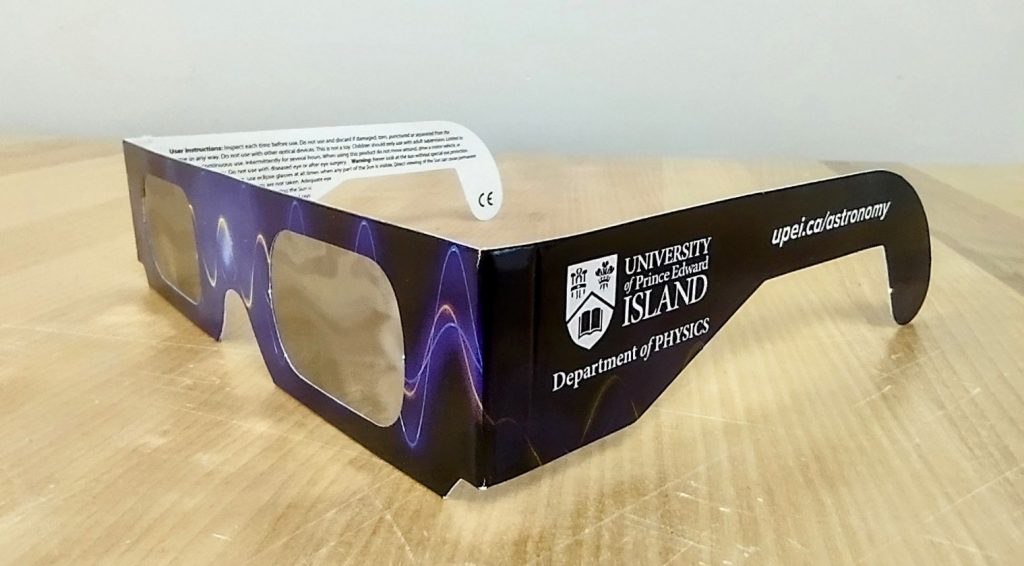
Purchasing Eclipse Glasses
There are many retailers online that sell eclipse glasses, more so in the United States rather than Canada. The glasses come in a wide variety of colourful cardboard frames, so you can choose a style that you like. BEWARE of counterfeit eclipse glasses, which may claim to meet the standards for safe solar filters, but actually do not. Before you order your glasses, take a look at the Suppliers of Safe Solar Filters & Viewers page from the American Astronomical Society (AAS). The AAS links to the websites of all the reputable manufacturers and distributers on its list. If you want to buy from a Canadian vendor, then look for the “(Canada)” at the end of the vendor listing.
If you’re ordering from a large online retailer that has “marketplace” sellers, make sure that there is a reputable seller named on the product listing and that the brand of glasses is on the list of safe solar filters linked above.
The cost of shipping a few pairs of glasses can often be more than the cost of the glasses themselves. To save some money, try getting together with friends or family members to order a larger quantity of glasses. You’ll split the shipping cost and you’ll probably get a lower price per pair by purchasing in bulk.
Inspecting and Safe Handling of Eclipse Glasses
Once you have your eclipse glasses, store them carefully to avoid damaging the lenses. Each time you plan to use your glasses to view the sun, inspect them for damage (e.g. scratched or torn lenses) before looking at the sun. Follow the instruction of the American Astronomical Society for testing your glasses by looking through the lenses at a very bright lamp or flashlight, or at the sun’s reflection from a shiny object. Those light sources should appear very dim or not even be visible through eclipse glasses.
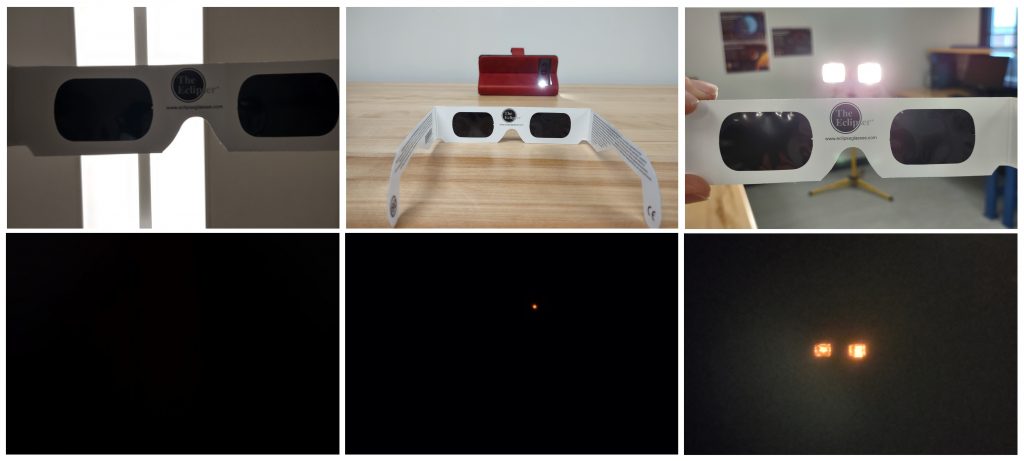
Overhead room lights (top left) cannot be seen at all through the eclipse glasses (bottom left).
A bright flashlight from a smartphone (top center) is only a dim pinpoint of light when viewed through eclipse glasses (bottom center).
A set of halogen work lights (top right) appears much dimmer through the eclipse glasses (bottom right).
Children should always be supervised when they are using eclipse glasses/viewers, to make sure that they are not accidentally viewing the sun around the edge of the frame. Some people insert eclipse glasses into a paper-plate mask to provide extra protection for young children. If you do this, you need to be careful that there are absolutely no cracks between the paper plate and the eclipse glasses where sunlight can get through.
Welding Glasses are NOT (typically) a safe option
Most welding glasses are not safe for looking at the sun. The only type that can be used safely are shade level 14, which is an uncommon type that is darker than most welding glasses. If you have a pair of welding glasses and you do not have documentation that they are shade level 14, do NOT use them to view the sun.
Indirect Viewing with the Projection Method
If you don’t have access to eclipse glasses or viewers, you can still watch a solar eclipse by projecting it. Even if you do have eclipse glasses, this can be a fun activity to try. In this method, you will pass the sun’s light through a small hole, or binoculars, and focus that light on a white surface. Then you can safely view the projected image, because the intensity of the image has been diminished by capturing only a small sliver of light during the projection process.
Below are a few ways to project an image of the sun:
- Use two pieces of stiff white cardboard (paper plates or cardstock will do) to make a simple pinhole projector;
- Use a cereal/cracker/cookie box, paper, and aluminum foil to make a box pinhole projector. This box projector will provide a better image than just the simple projector above, because the image will be in a darker viewing area;
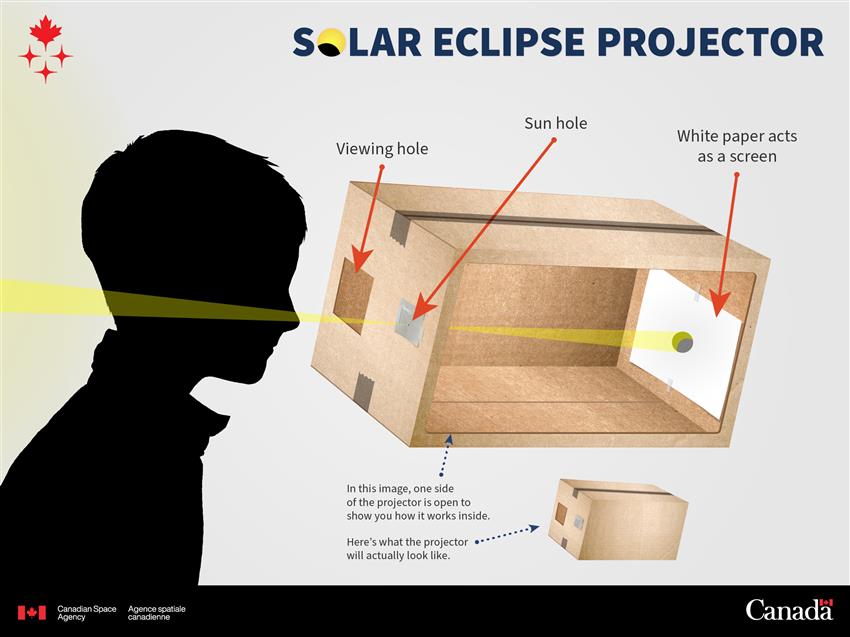
- Use a cardboard tube to make a pinhole projector. It’s a bit harder to aim than a simple box projector, but it can provide larger views of the sun with practice.
- If you have binoculars, use them to project the Sun’s image on to white cardboard. If you have a tripod mount for your binoculars, that’s even better because you won’t have to hold them for the duration of your viewing. Do NOT look through the binoculars while they are pointed at the sun. Beware the heat that will be generated near the eyepieces. Give your binoculars breaks from being focussed on the sun every few minutes so that they don’t overheat. Do NOT leave this apparatus unattended, especially around children!
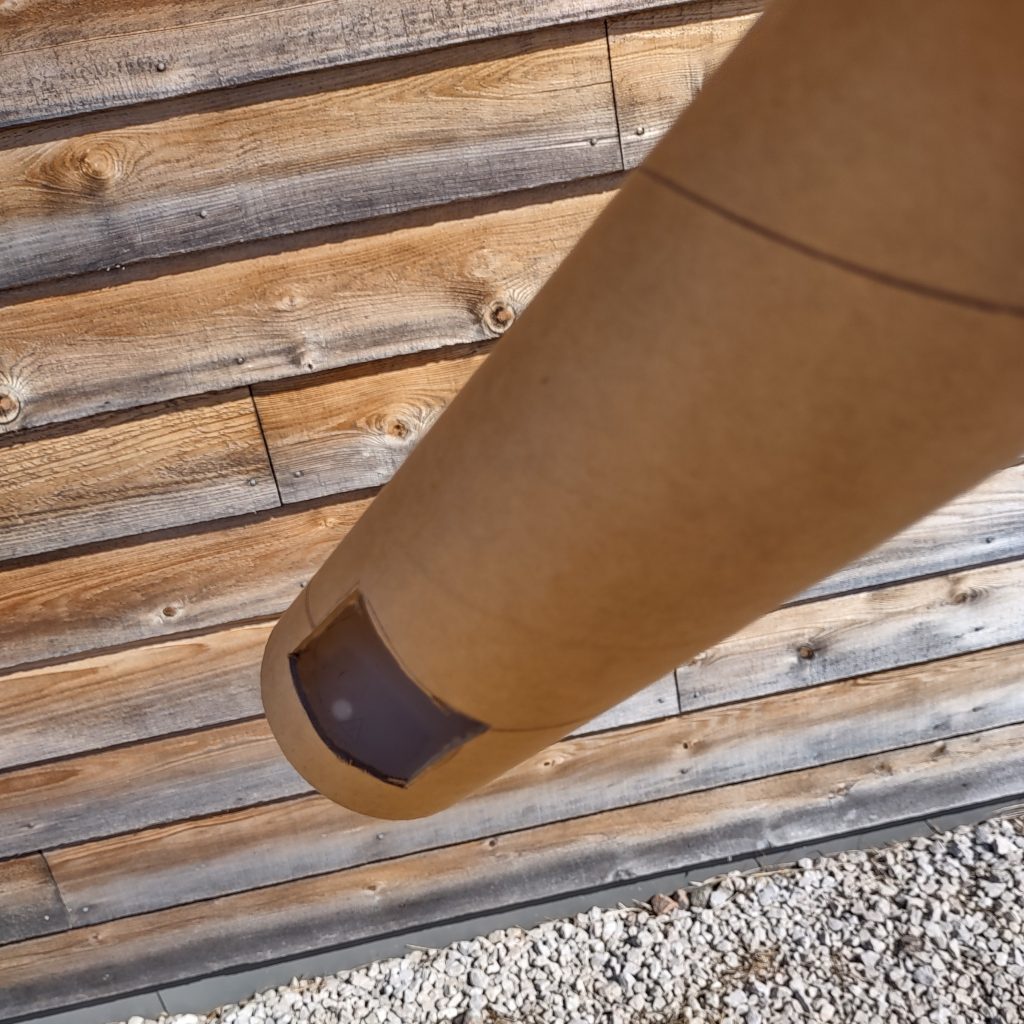
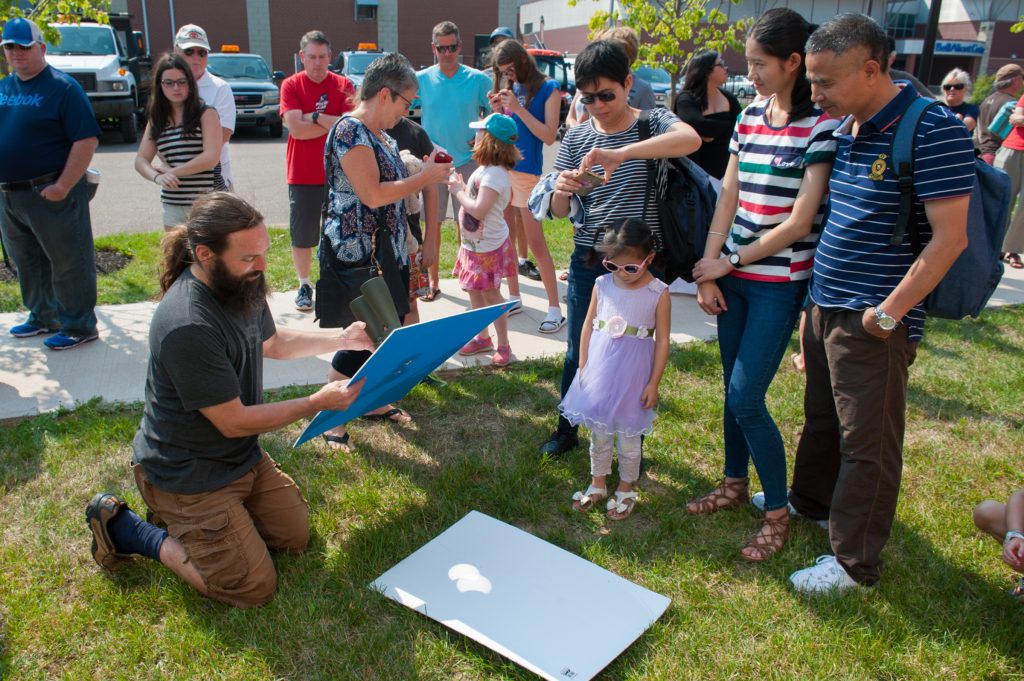
Photographing the Eclipse Safely
Any camera you use to photograph the eclipse must have a solar filter on it, to protect both the optics and you from intense sunlight. If you think you’d like to photograph the eclipse, read these tips on how to do it safely and still get good pictures with a smartphone. There are solar filter products for smartphones available for purchase: one product called SolarSnap lets you attach a solar filter to your smartphone (with Velcro) and comes with an app to help you photograph the sun or an eclipse. Another product called SafeShot is a handheld board that comes with a filter for your camera lens plus a filtered viewing port to protect your eyes while you’re lining up your photo. You can also use a pair of eclipse glasses as a camera solar filter; just tape one of the lenses over your smartphone camera lens.

